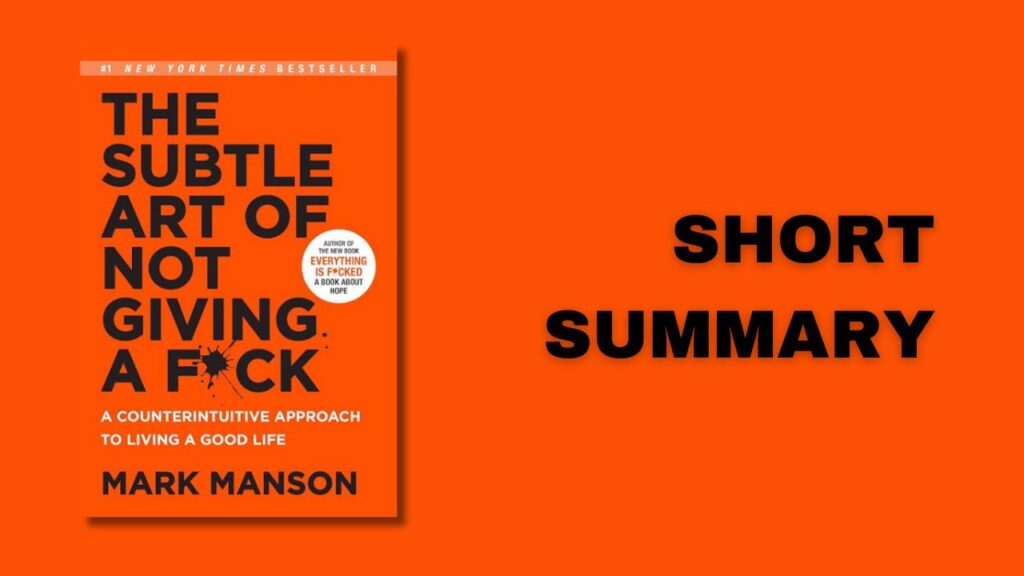“Can’t Hurt Me: Master Your Mind and Defy the Odds” by David Goggins is a powerful memoir and self-help book that recounts the author’s journey from a challenging childhood to becoming a Navy SEAL and an ultra-endurance athlete. Goggins shares his life story along with lessons on mental toughness, discipline, and overcoming obstacles. The book is not just about Goggins’ incredible feats but also serves as a guide for readers to push past their own limits.
Chapter 1. David Goggins’ Early Life and Challenges
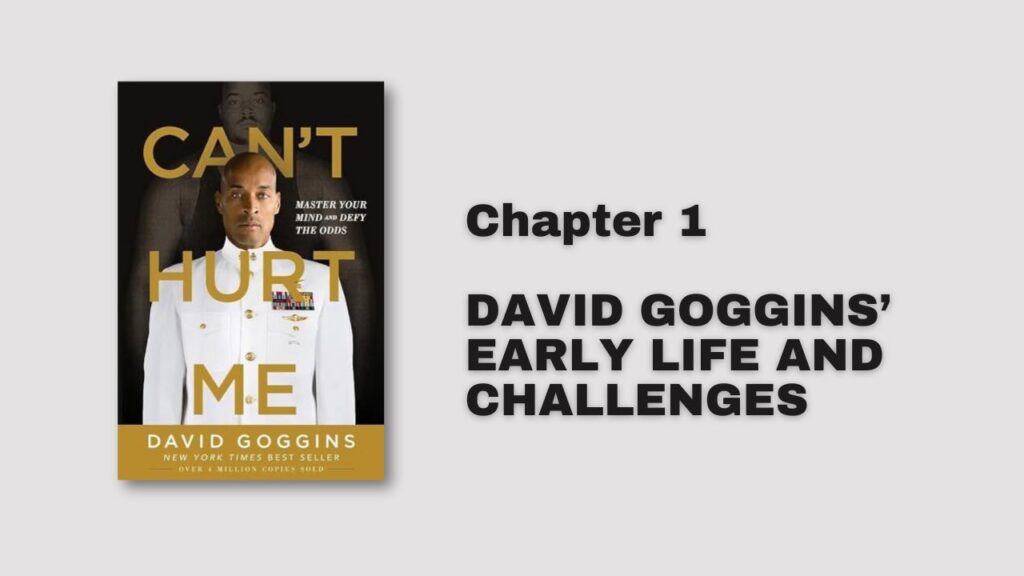
Goggins grew up in a dysfunctional family, facing poverty, racism, and abuse. He struggled with self-esteem and obesity, leading to a difficult adolescence. Despite these challenges, he later transformed himself through sheer determination and resilience.
Goggins’ early life shows that no matter how tough your circumstances are, you can change your story. The first lesson here is about resilience and refusing to be defined by your past. Even when life seems unfair, you have the power to change your future through perseverance and hard work.
Chapter 2. The Accountability Mirror

One of Goggins’ key strategies for self-improvement is what he calls the “Accountability Mirror.” As a teenager, he would stand in front of a mirror and confront the hard truths about himself, writing down goals and holding himself accountable.
The Accountability Mirror is about being brutally honest with yourself. If you want to improve, you have to acknowledge where you’re falling short. This lesson encourages us to stop making excuses, confront our weaknesses, and take responsibility for our growth.
Chapter 3. The 40% Rule
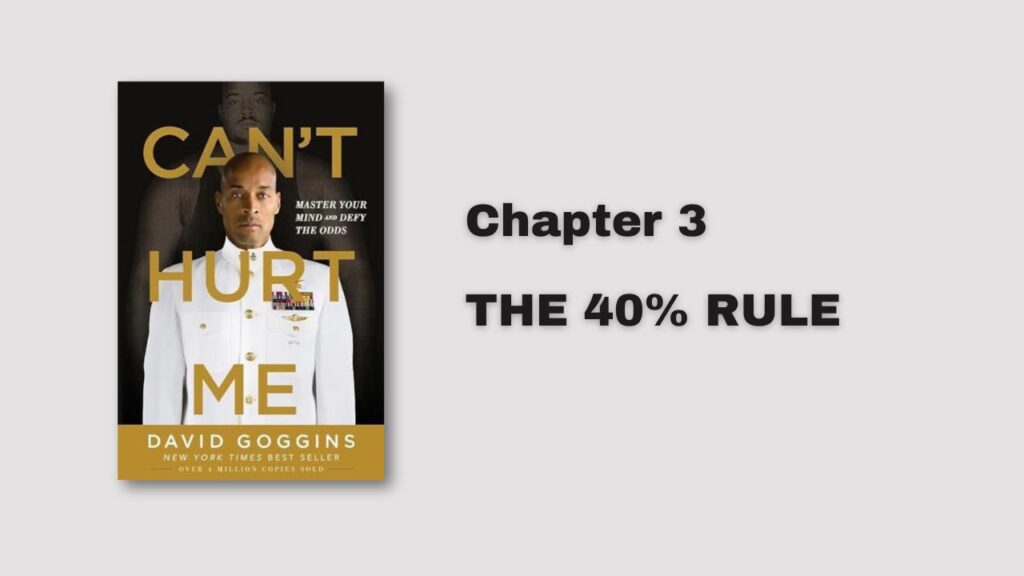
Goggins introduces the “40% Rule,” which states that when you feel like you’re done, you’ve only tapped into 40% of your potential. He believes that most people quit too early, and by pushing past that initial discomfort, you can achieve much more than you think.
Imagine you’re running and feel like you can’t go any further. According to the 40% Rule, you’ve still got more in the tank. This lesson teaches us that our limits are often self-imposed, and we can push beyond them by refusing to give up when things get tough.
Chapter 4. Callousing the Mind
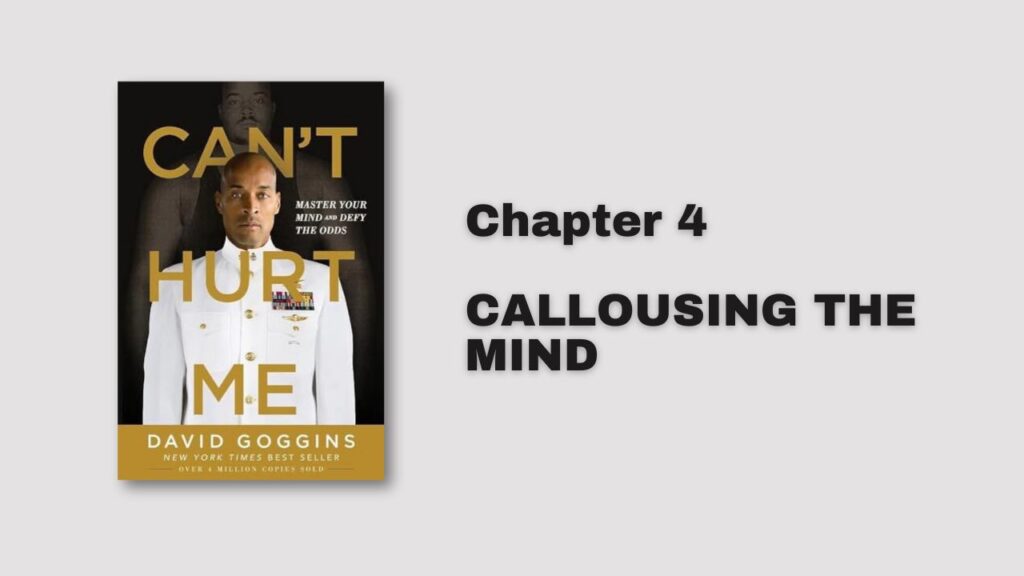
Just as you build calluses on your hands through physical labor, Goggins believes you can build mental calluses by consistently facing challenges. He emphasizes the importance of deliberately putting yourself in uncomfortable situations to strengthen your mind.
Callousing the mind means toughening yourself up mentally. It’s like building a mental shield that helps you handle stress, fear, and pain. This lesson encourages us to seek out challenges and discomfort rather than avoid them, as they make us stronger in the long run.
Chapter 5. Embrace the Suck
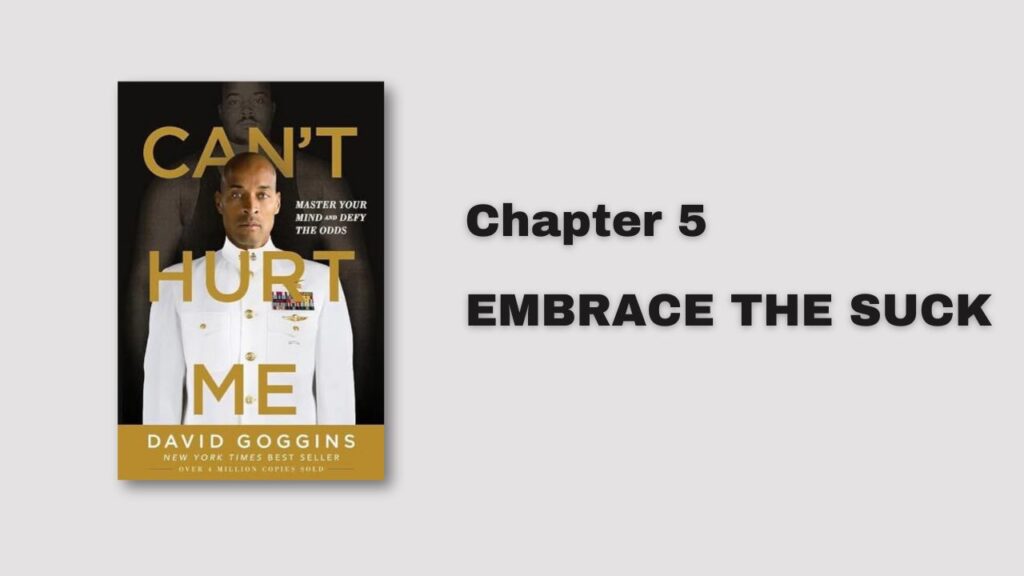
Goggins talks about embracing pain and suffering as a way to grow. He believes that when you willingly endure discomfort, you develop resilience and grit. Instead of shying away from tough situations, he advises facing them head-on.
“Embrace the Suck” means accepting that life can be hard, and instead of complaining, you embrace the challenges. This lesson teaches us to change our mindset about pain and discomfort, seeing them as opportunities for growth rather than obstacles.
Chapter 6. Taking Souls
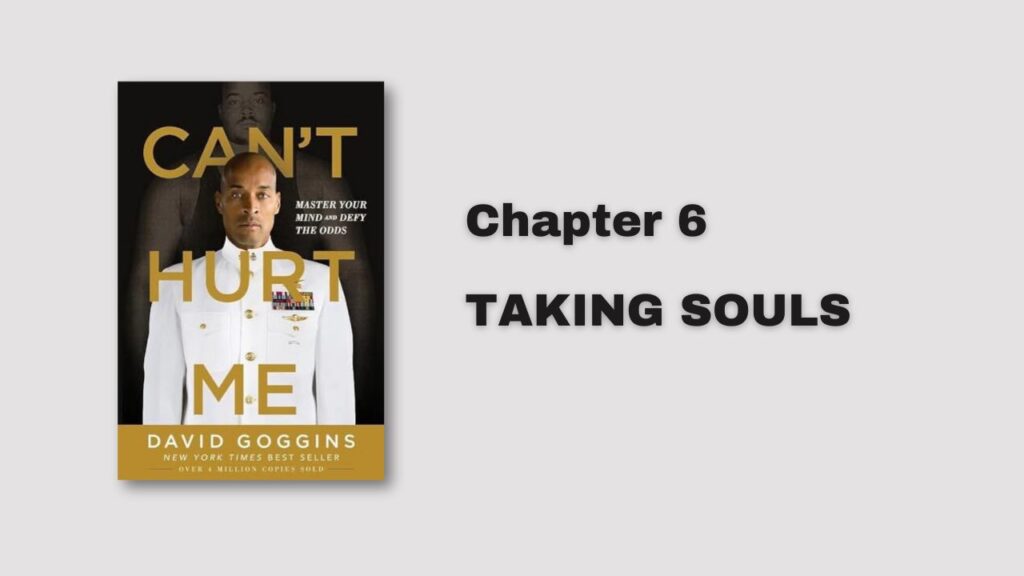
Goggins describes a concept called “Taking Souls,” which is about outperforming your competition, not by focusing on them, but by pushing yourself beyond what they expect. It’s about proving to yourself that you can go further than anyone else thinks possible.
Taking Souls is a mindset where you show others – and yourself – that you won’t be broken, no matter how hard things get. This lesson teaches us to use adversity as fuel and to push ourselves harder, especially when others doubt us.
Chapter 7. The Cookie Jar

The “Cookie Jar” is a mental tool Goggins uses to remind himself of past victories and accomplishments. When he’s facing a difficult situation, he mentally “reaches into the cookie jar” to draw strength from previous successes.
The Cookie Jar is about building confidence by remembering your past achievements. When you’re struggling, think back to times when you overcame challenges. This lesson teaches us that reflecting on our successes can give us the motivation and confidence to keep going.
Chapter 8. The Power of Visualization

Goggins emphasizes the power of visualization to achieve goals. He visualized himself succeeding in his toughest challenges, from completing Navy SEAL training to finishing ultra-endurance races.
Visualization is like mental rehearsal. By imagining yourself achieving your goals, you prepare your mind for success. This lesson encourages us to use visualization as a tool to build confidence and clarity in pursuing our objectives.
Chapter 9. Becoming Uncommon Among the Uncommon
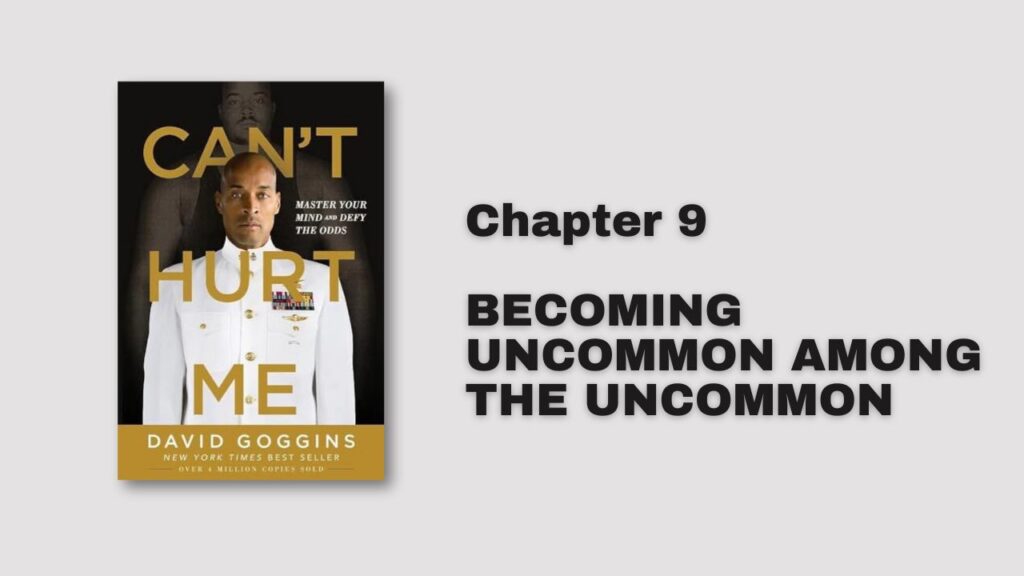
Goggins talks about the importance of setting higher standards for yourself. Even among high achievers, he strives to be the best, constantly pushing himself to go beyond what others consider extraordinary.
This lesson is about never settling for average, even when you’re already successful. It’s about continuously raising the bar and challenging yourself to be exceptional in everything you do.
Chapter 10. The Empowerment of Suffering

Goggins believes that suffering is a powerful teacher. He suggests that embracing suffering can help you discover your true potential and resilience. Instead of avoiding pain, he advises using it as a tool for empowerment.
Suffering can reveal strengths you didn’t know you had. This lesson teaches us that by facing and enduring pain, we can unlock new levels of personal growth and understanding.
Chapter 11. The Importance of Self-Discipline
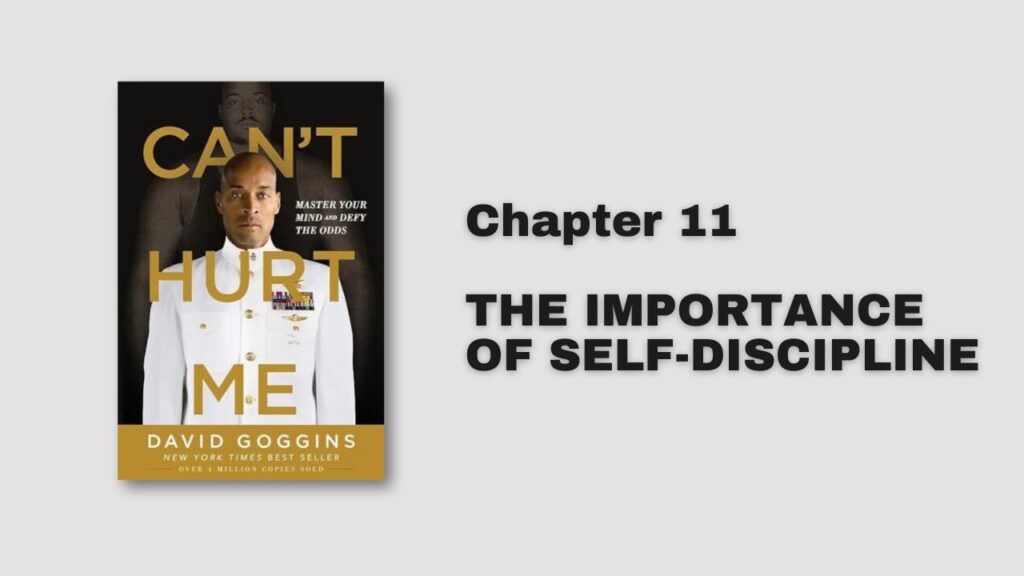
Throughout the book, Goggins emphasizes the role of self-discipline in achieving success. He believes that discipline is the foundation of all accomplishment, whether it’s physical fitness, mental toughness, or personal goals.
Discipline is about doing what needs to be done, even when you don’t feel like it. This lesson teaches us that self-discipline is key to maintaining consistency and achieving long-term success, regardless of how we feel in the moment.
Chapter 12. Staying Humble and Hungry
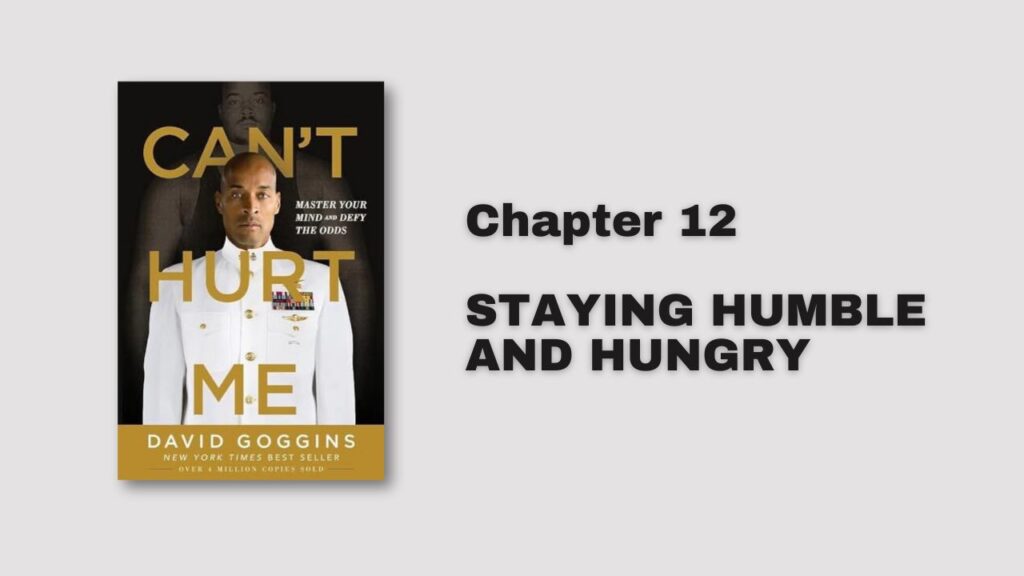
Despite all his achievements, Goggins stresses the importance of staying humble and never becoming complacent. He believes that no matter how much you accomplish, there’s always room for improvement.
Staying humble means recognizing that there’s always more to learn and more ways to grow. This lesson teaches us to remain grounded, continue striving for excellence, and never settle for less than our best.
Conclusion:

“Can’t Hurt Me” is a powerful guide to mental toughness and self-mastery. David Goggins’ life story shows that no matter how tough life gets, you can push through and achieve greatness by mastering your mind and refusing to give up. The lessons in the book challenge us to face our fears, embrace discomfort, and push beyond our limits to discover our true potential.
Read more books summary like this
Think Like a Monk
By Jay Shetty
Unfu*k Yourself
By Gary John Bishop
22 Immutable Laws of Marketing
By AL Ries & Jack Trout
The Subtle Art of Not Giving a Fu*k
By Mark Manson
The Secret
By Rhonda Byrne
Think Like an Entrepreneur
By Beverly E. Jones
The 48 Laws of Power
By Robert Greene
How They Succeeded
By Orison Swett Marden
Thinking Fast and Slow
By Daniel Kahneman





